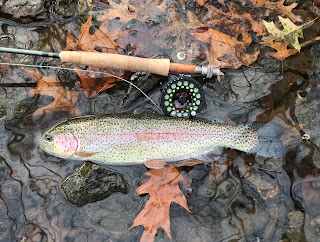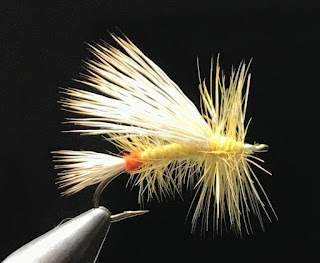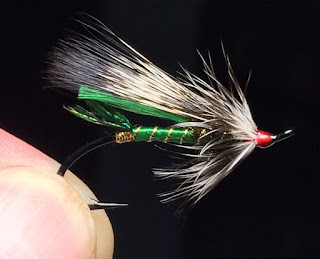I posted a couple of photos recently on Instagram of Mercer's Missing Link Caddis and afterwards I got a bunch of emails and messages from folks that are having trouble tying it - specifically getting the hackle wrapped cleanly. Here's how I do it and it works quite well - pardon my photography skills.
The trick here is to leave the wings - both the spent and the elk hair wing materials long until the hackle is completely wound and tied off.
Spent wings - wrap tight to a ball of dubbing to flare them.

Elk Hair - Tie in on top of a nice even platform formed when tying in the spent wings.

Hackle - Tie in in front of the elk hair butts and wrap counter-clockwise looking from above for a right handed tyer, and tie off behind the hook eye. The longer wing materials will allow you to wrap the hackle over the spent wings and around the base of the elk hair wing and butts without catching it. Make the spent wings about 2X the hook shank length, and cut the elk hair right at the skin so you have plenty of length.

The finished fly from angle above.

Side view.

And here's the video we did with Tim Flagler on tying it from start to finish.
Hope that helps!
We're headed to Montana in a couple of days, so we hope to have some posts from Big Sky country when we return since the computer is staying home. We'll try to post stuff from the trip daily to Instagram though - @mattgrobert
Sharpen your hooks.








